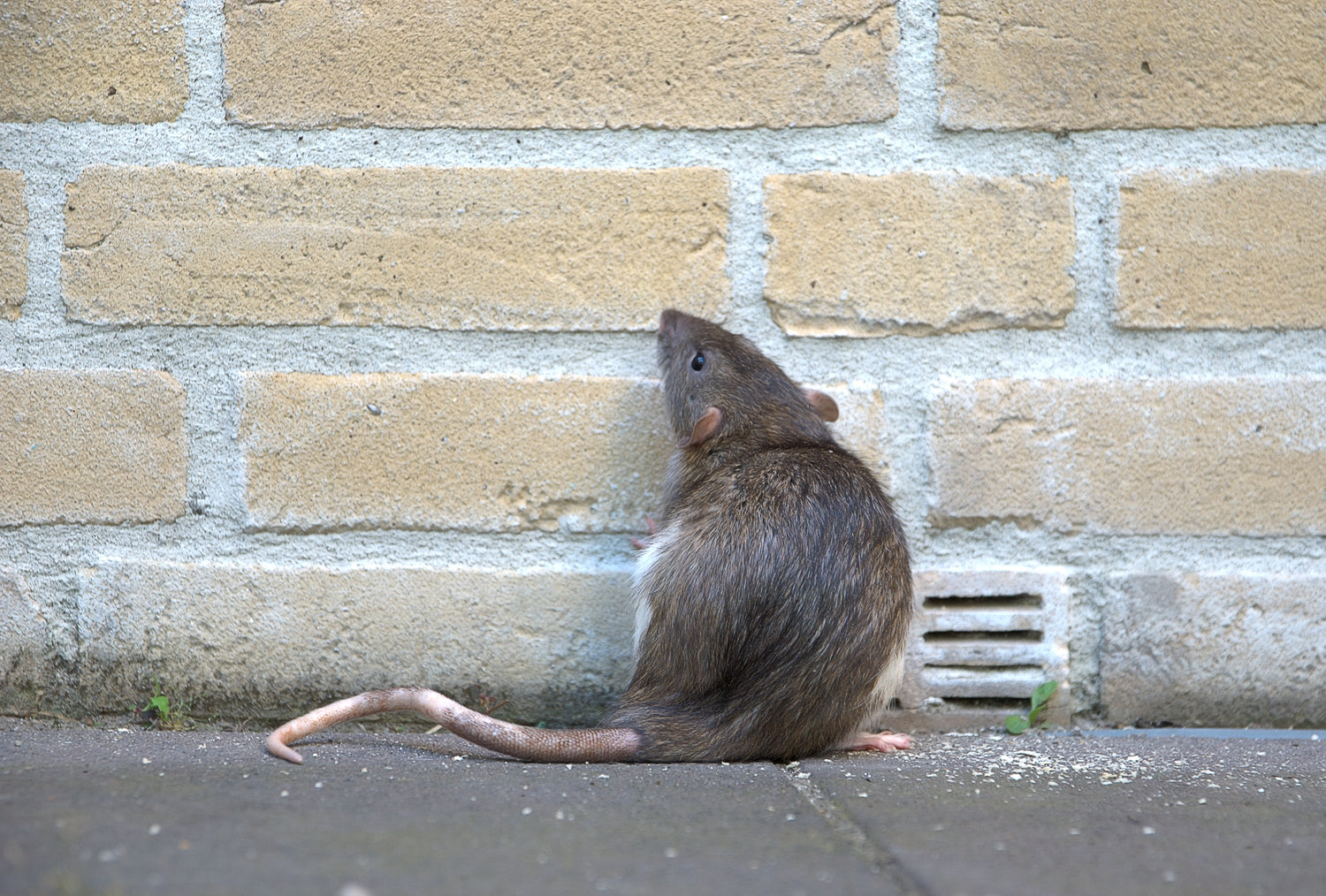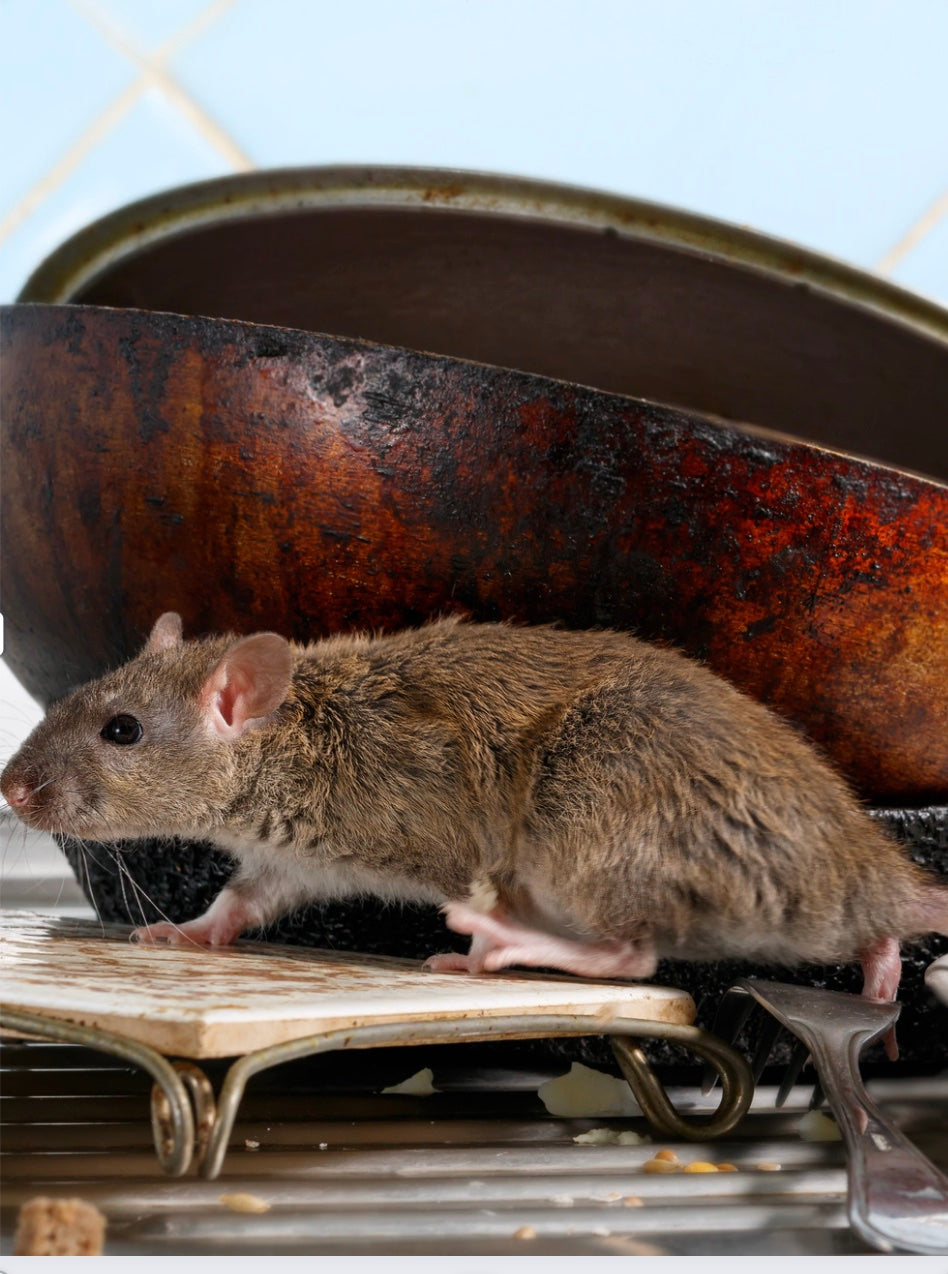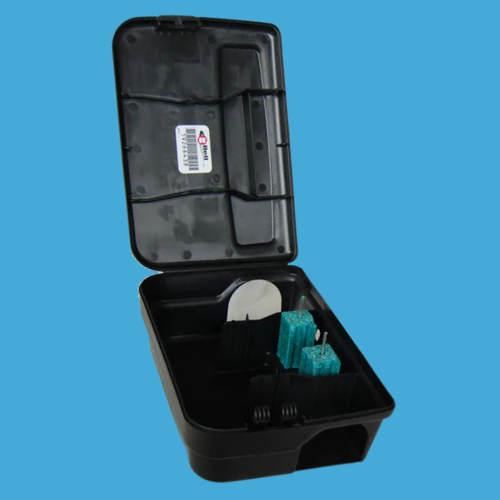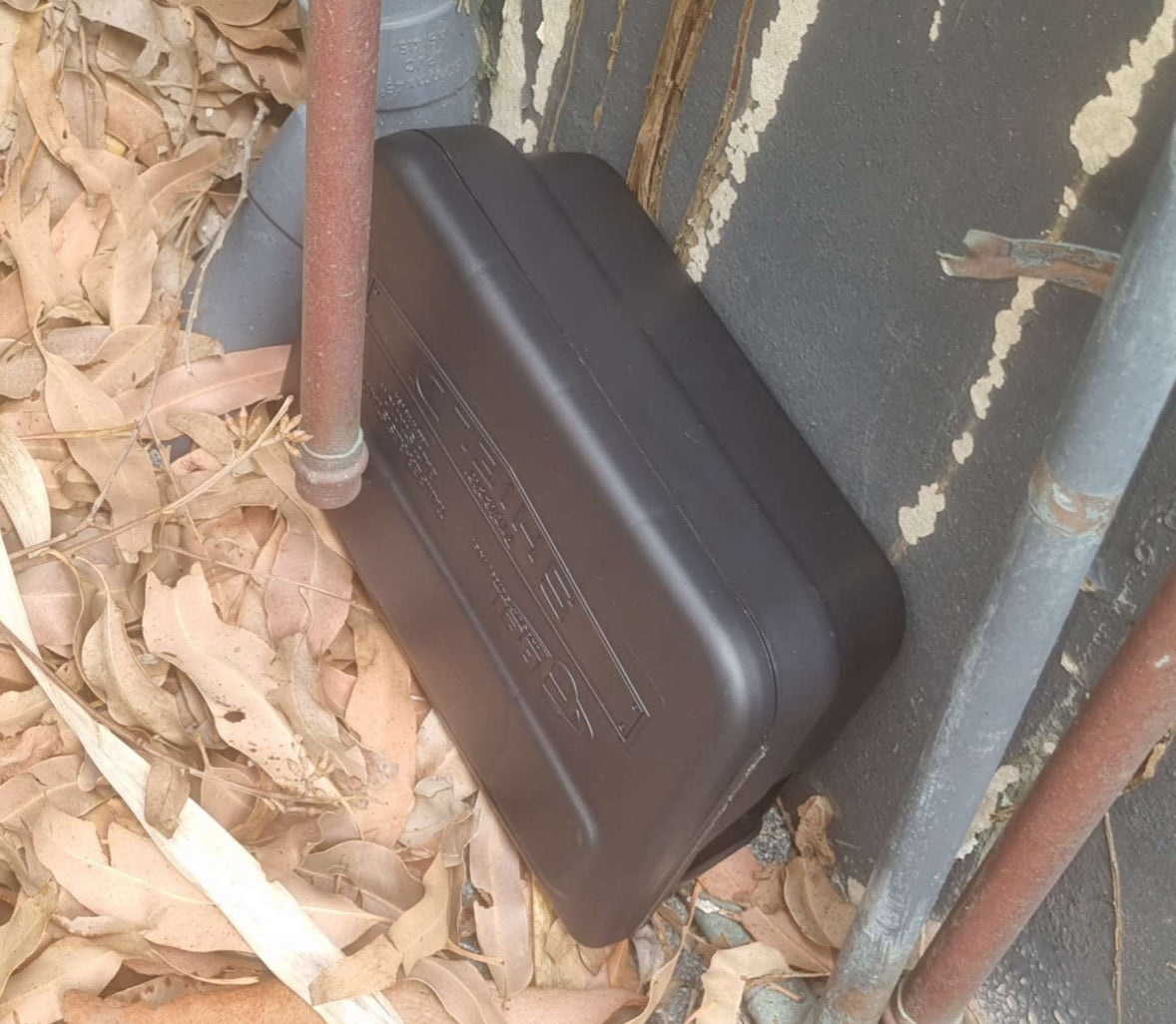Mastering Rodent Control: DIY Solutions for a Pest-Free Home
Introduction to DIY Rodent Control
Why is DIY rodent control necessary?
Experiencing a rodent issue on your property requires swift action. Rodents are highly destructive, constantly gnawing on electrical cables, air conditioning ducting, and timber, which can result in costly repairs if not addressed promptly.
Additionally, they frequently urinate in ceilings and around the property, leaving a strong, unpleasant ammonia-like odour. DIY rodent control provides homeowners with the necessary tools and knowledge to effectively address infestation problems, resulting in substantial cost savings and greater independence.
By taking a proactive approach, homeowners can address rodent problems as soon as they arise, preventing a minor infestation from escalating into a costly, pervasive issue.
DIY rodent control can lead to substantial cost savings, especially given the often ineffective solutions provided by professional rodent exterminator services.
These services typically offer temporary fixes, deliberately designed to encourage ongoing engagements. This ensures repeated visits and continuous payments, prioritizing their financial gain over genuinely resolving your rodent infestation.
By mastering fundamental rodent control methods, homeowners can invest in rodent bait stations to effectively tackle the problem long-term at a significantly reduced cost.
Implementing a personalized rodent control program allows homeowners to tailor their strategies to their specific environment. This sense of control can effectively address particular rodent issues, such as roof rats or house mice.
Empowered with knowledge homeowners can effectively control their home environment, reducing reliance on external services.
In conclusion, DIY rodent control is not just about tackling immediate rodent problems but also about long-term control and management. By embracing DIY strategies, homeowners gain financial savings and cultivate a sense of independence and confidence in managing their living spaces.
What makes DIYRatRid different from traditional pest control services?
In a landscape dominated by the traditional rodent control service, DIYRatRid emerges as a game-changer, melding expertise with practicality to address rodent control effectively.
Unlike conventional methods, DIYRatRid offers a tailored solution designed to empower individuals with the knowledge and tools necessary for tackling rodent infestations head-on.
This innovative approach not only prioritizes effective rodent management but also emphasizes user-friendliness and cost-effectiveness.
By focusing on DIY solutions, DIYRatRid stands out as a pioneer in delivering accessible rodent removal strategies that blend professional-grade techniques with do-it-yourself empowerment, reshaping the future of pest control.
Share information about your brand with your customers. Describe a product, make announcements, or welcome customers to your store.
Why DIY
With a 99% success rate our DIY Kits provide a solution that will deal with rats issues from the ground up. So if it’s a 20 storey building or a single level dwelling our proven method will resolve the issue.
The DIY Kits give you
-

The right product and knowledge
-

Clear instructions on where and how to place the product
-

How much bait is needed and when to top up
-

How to optimize and maintain the rat bait box stations
DIY Rat Rid is a tried and tested solution. If you follow our recommendations you too will get the same success we get for our customers.
Don’t waste your money on other flawed methods or inferior products sold at your local hardware.
Using the DIY Rat Rid solution will save hundreds of dollars/year and gets the job done right the first time.
Understanding Rodent Behavior and Infestation Signs
What common rodent species invade homes?
In the realm of rodent control, two primary species often infiltrate Australian homes, causing notable disruptions and damage.

The Black Rat (Rattus Rattus)
This rat is also commonly referred to as the roof rat, ship rat, or house rat, is known for its agile climbing abilities.
This species typically occupies higher spaces within homes or buildings, such as attics or rafters, and is adept at traversing wires and tree branches to gain access.

The Brown Rat (Rattus Norvegicus)
On the other hand, the brown rat, also called the common rat, street rat, sewer rat, wharf rat, norway rat, or Norwegian rat presents a different challenge as this specie tends to inhabit lower levels.
Preferring basements or ground floors, brown rats are more inclined to burrow and create nests in foundational sectors of buildings.
Their presence often indicates a significant rodent activity, leaving behind telltale signs such as rodent droppings and gnawed structures, which necessitate immediate attention from rodent control services.
These invasive species contribute to rodent infestations and pose significant risks to human health and property. Effective rodent control programs and integrated pest management strategies are crucial for mitigating these issues.
The DIYRatRid solution offers effective pest control, addressing both the black rat and brown rat without requiring detailed knowledge of their specific habitats and behaviours.
Step-By-Step Guide to Implementing DIY Rodent Control
What tools and materials are needed for DIY rodent control?
When it comes to DIY rodent control, many traditional solutions require complex setups, specialised tools, and extensive knowledge of pest behavior. However, with DIYRatRid, no tools are required—our solution is designed for easy, hassle-free rodent control that anyone can implement.
No Tools Needed – Just Place & Protect

DIYRatRid’s system is as simple as placing pre-filled bait stations around the perimeter of the area you want to protect. The bait stations are delivered to your door, ready to use, eliminating the need for handling toxic baits or setting up complicated traps.
- For Home Protection: Place the bait stations around the perimeter of your house at ground level to stop rodents from entering.
- For Full Property Protection: If you want to control rodent activity across your entire property boundary, simply place the bait stations along the external perimeter of your land.
Optional Tools for Securing Bait Stations
The only time you may need basic tools is if you choose to fix the bait stations to a structure (e.g., house walls, fences, or other surfaces) for added stability. Here’s what you’ll need depending on the mounting surface:
- For Masonry (brick, concrete, stone):
- For Timber (wooden fences, walls, or sheds):
Even without securing them, the weight and design of the bait stations keep them stable when placed correctly on flat surfaces.
Simple & Effective Rodent Control
DIYRatRid takes the complexity out of rodent control. No bait handling, no tricky traps, and no need for professional help—just place the bait stations in the right locations and let them do the work.
For step-by-step guidance on placement and how the system works, visit our How It Works page: DIYRatRid – How It Works
This approach ensures maximum effectiveness with minimal effort, giving you a cost-effective, long-term solution to keep rodents away from your home or property.
Maintenance Tips for Long-Term Rodent Control
How can homeowners maintain a rodent-free environment?
Maintaining a rodent-free environment requires diligent monitoring and effective pest control strategies. Begin by inspecting bait boxes two weeks after the initial installation to gauge the success of the treatment. Based on consumption levels, adjust the frequency of these inspections. Continually replenish the supply of Contrac Blox Rat Bait as required, ensuring that bait levels are sufficient until there is no longer significant rat activity. This proactive approach helps maintain the effectiveness of the rodent control methods.
The amount of bait consumed will vary based on local rodent activity. Initially, frequent inspections of bait boxes are crucial to track consumption rates and ensure timely replenishment. As rodent activity decreases, the frequency of checks can be reduced. It is important to use the commercial-grade bait supplied with bait station kits, as it is more potent than domestic-grade options which may be ineffective against some resistant rats.
For effective rodent prevention, follow these key pest control tips:
1. Anticipate issues rather than waiting to react. Simultaneously expose all pests to control measures while removing alternative food sources.
2. Adhere strictly to product label directions to optimize results and protect non-target animals.
3. Replenish Contrac Blox Rat Bait only after consumption and ensure a generous supply.
4. Use bait stations to keep the bait fresh, dry, and protected from non-target species.
5. Trim tree branches at least 300mm from the roof to eliminate easy access routes for rodents.
By implementing these integrated pest management techniques, homeowners can create a more effective and sustainable rodent control program.
Safety Considerations in DIY Rodent Control
How can DIY rodent control be safely implemented in homes with pets and children?
When tackling rodent infestations, especially in environments with children and pets, safety is paramount. Here are guidelines for using rodent control methods that ensure protection for both:
1. **Utilize Tamper-Resistant Bait Stations**: Opt for bait stations designed to prevent access by non-target creatures. These stations securely house rodent bait poison within a locked compartment, accessible only with a special key. This ensures children and pets remain safe from accidental exposure.
2. **Incorporate Baffle Systems**: Choose bait stations with internal baffles. This design feature effectively blocks any attempt by children or pets to reach the bait inside, as the baffle prevents them from advancing further into the station.
3. **Strategic Placement**: Place bait stations in areas known for rodent activity. Avoid locations easily accessible to children and pets, such as play areas or pet feeding zones. Installation should prioritise corners, along walls, or sheltered outdoor areas where rodents are likely to travel.
4. **Education and Awareness**: Educate all household members on the importance of not tampering with bait stations. Inform children about potential dangers and enforce a policy of leaving pest control devices untouched.
By adhering to these guidelines, rodent control can be effectively managed without compromising the safety of children and pets. Always prioritise the use of secure, tamper-resistant solutions to maintain a safe and rodent-free environment.
What safety measures should be taken when using chemical control methods?
Chemical control methods for rodent management primarily involve the use of rodenticides, which are effective in reducing rodent populations. This approach offers both advantages and drawbacks, particularly when considering safety.
**Pros:**
1. **Effectiveness:** Chemical control is highly effective in managing rodent infestations. Pest control-grade poisons are designed to eliminate rodents swiftly and efficiently. Unlike consumer-grade baits purchased from hardwares etc, which rodents can often resist, professional-grade chemicals such as those used by DIYratRid are potent, with no reported immunities among rodent populations in Australia.
2. **Broad Coverage:** These methods allow for widespread application, targeting large areas and accounting for extensive rodent activity. This means rodent control services can manage even severe infestations across various environments.
3. **Time Efficiency:** Chemical methods reduce the time required to mitigate a rodent problem, offering a prompt solution in comparison to mechanical traps or exclusion techniques.
**Cons:**
1. **Safety Risks:** Safety is a paramount concern with chemical methods of rodent control. Rodenticides, if misapplied, pose serious risks to humans, pets, and non-target wildlife. Exposure to these toxic substances through accidental ingestion or contact can lead to poisoning. To mitigate this risk, rat bait stations are implemented, effectively minimising the chance of unintentional consumption.
2. **Environmental Impact:** While effective, chemical control lacks eco-friendly attributes. These toxins if not contained can permeate ecosystems, affecting non-target species and leading to potential environmental imbalances.
3. **Residual Effects:** Chemical baits can leave harmful residues in the environment, posing risks to wildlife and the broader ecosystem. However, using bait stations effectively mitigates these residual effects, ensuring a more targeted and eco-friendly rodent control approach.
Despite the absence of an eco-friendly alternative that matches the efficacy of chemical controls, users must carefully weigh the pros and cons, considering safety as a priority.
Case Studies: Success Stories from DIYRadRid Users
How have homeowners successfully implemented DIYRatRid solutions?
DIYRatRid has proven revolutionary in the realm of providing an effective rodent control method, transforming the daunting task of rat removal into a doable DIY project. Customers repeatedly emphasise how DIYRatRid has liberated them from recurring engagement with professional rodent control companies, whose solutions often temporarily manage the issue, leaving homeowners reliant on their services year after year.
One customer from Sydney shared how persistent roof rats had been a nightmare. Despite several visits from professional pest controlers, the rodents returned each season. Frustrated with the cycle, they turned to DIYRatRid, which not only exterminated the rats efficiently but also equipped them with strategies for long-term prevention.
In another case, a Melbourne based family celebrated their newfound peace after fighting a rat infestation for years. Despite continuously contacting pest control services, the relief was short-lived. DIYRatRid, however, provided a comprehensive solution that targeted the root of their problem, ensuring a rat-free home without repeated treatments.
A business owner in Brisbane struggled with the relentless presence of Norway rats in his warehouse. After investing heavily in commercial pest control without success, he chose DIYRatRid, which not only addressed the infestation comprehensively but also preserved his inventory from further rodent damage.
What are the long-term benefits experienced by DIYRatRid users?
These stories above, among thousands, clearly demonstrate DIYRatRid's capability to outshine traditional pest control methods. It's not just about eradicating rodents—it's about doing so affordably and permanently, empowering homeowners and business operators to take control without recurring costs.
Can DIY rodent control provide professional-grade results?
Our DIY rodent control with rat bait stations enables homeowners to tackle rodent infestations effectively without relying on professional pest control services that rarely delivers results.
I know this firsthand after servicing thousands of customers in my previous role at PossumPiper. Many shared stories about pest controllers treating their homes for both general pests and rodents with ineffective solutions that were never going to resolve the issue.
Our solution directly targets rodent activity, allowing homeowners to control rats and mice with a proactive, hands-on approach.
In contrast to professional pest services, our DIY method offers the advantage of immediate implementation, is more economical, and delivers a rewarding sense of achievement.
Although non commercial-grade products and professional services might seem appealing, they are generally not an effective rodent control solution.

Place & Protect
Why Wait? Our innovative solution is as simple as it gets—yet far more effective than so-called professionals.
It’s easy: place and protect to get your rodent problem under control in no time. Enjoy peace of mind knowing your property is rodent-free!






